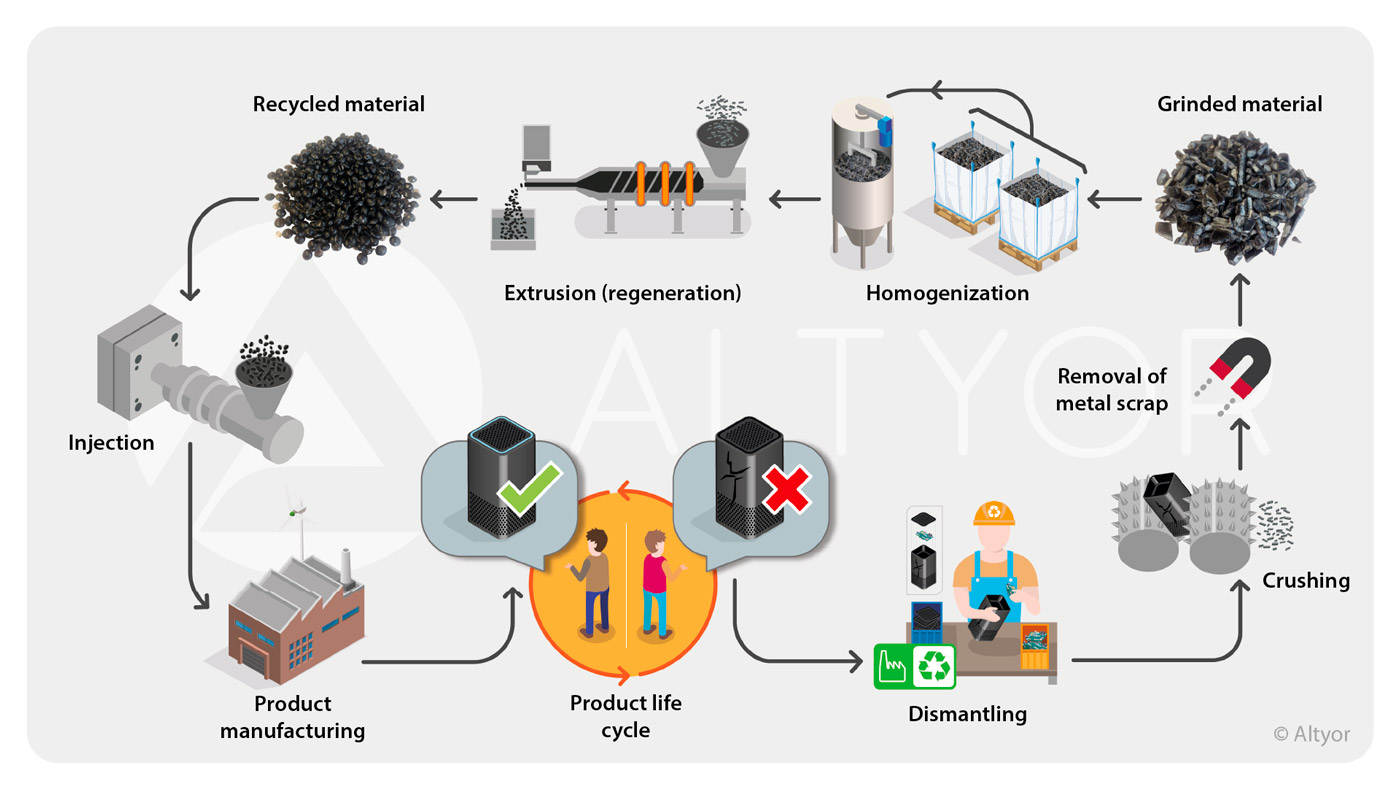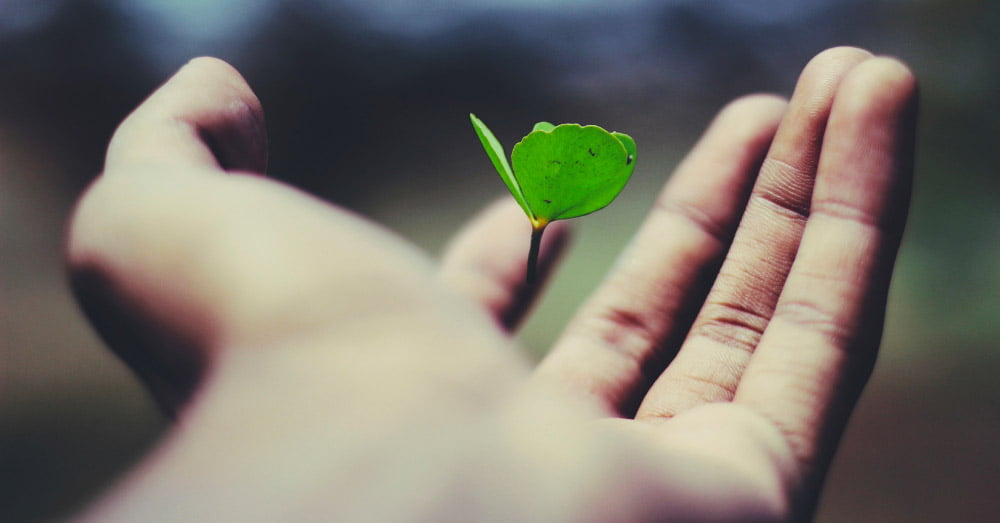Altyor has been using recycled plastic for its customers’ products for over 15 years. Since 2020, Altyor has created its own French recycling loop.
What is a recycling loop?
Our recycling chain is a loop that allows us to recover plastic from end-of-life products in order to reintegrate it into the production of new products.
Here is a diagram of the recycling loop:

Several phases take place in order to achieve this transformation:
- The first phase is the dismantling phase. It is a question of sorting the parts and separating the electronics from the mechanics, and removing the parasites like labels, screws or other elements which could pollute the material.
- Then takes place the phase of crushing the material into small chips
- Once this phase is done, it is necessary to remove all metallic pollution with the help of magnet in particular
- Important phase, the homogenization phase allowing the material to be homogeneous in terms of color, texture and behavior on a batch of several tons
- The extrusion phase, also called regeneration, allows to reconstitute a raw material having the same shape as a new material. This makes it possible to inject up to 100% recycled material.
- The last step is the injection of the recycled material into new products
What is the difference between an open and closed loop?
A closed recycling loop means that the plastic material of the initial products will be used to inject the same product reference at the end. The choice of this loop is possible with a business model that allows easy recovery of the products (rental or deposit).
On the contrary, in an open loop, the plastic material of the initial products will be used to inject other product references. (you can see an example above)
Here is an example of a closed loop:

Why set up a recycling loop?
There are several reasons for choosing to set up a recycling loop.
The implementation of a loop is first of all a responsible choice and positions you as an actor of sustainable products. It is about making the decision to use recycled plastic and to control the end of life of your products. Choosing recycled material is a real lever to reduce the environmental footprint of your products and you will bring a real solution to your final customers when they do not use their products anymore.
The second reason is that, in the case of a closed loop, you have even more control over the quality of the material since it is itself derived from your products. In addition to quality, you also control the quantity and can control your material stocks.
Finally, the strong control of the process by Altyor’s teams allows you to limit the cost of recycled material and not exceed the purchase price of a new material.

How to set up a recycling loop?
Altyor has created a recycling loop that can be adapted to each product thanks to its expertise and network of partners. The Altyor loop, created with French partners, is effective and allows millions of recycled plastic parts to be produced each year.
And beware of preconceived ideas about limited color choices or appearance defects! Recycled plastic is full of surprises.
If you want to think about this model for your products, contact us moc.r1722054888oytla1722054888@ssen1722054888isub1722054888 or via this contact form.
Plastics, an environmental issue
[Innovation] Towards excellence in eco-responsibility
[Innovation] Towards excellence in eco-responsibility https://altyor.com/wp-content/uploads/2021/10/bagde-eco-responsable.jpg 1000 523 Altyor //altyor.fr/wp-content/uploads/2020/04/Logo-Altyor-H-RVB_2018.svgAltyor launches its eco-responsible Design for tomorrow index 2 years ago, Altyor launched Design for tomorrow, an approach that aims…
Top 5 Misconceptions About Recycled Plastic
Top 5 Misconceptions About Recycled Plastic https://altyor.com/wp-content/uploads/2021/06/pexels-keira-burton-6624314.jpg 1000 523 Altyor //altyor.fr/wp-content/uploads/2020/04/Logo-Altyor-H-RVB_2018.svgAltyor is fighting misconceptions about recycled plastic by giving you 5 false beliefs about this material with high potential for…

